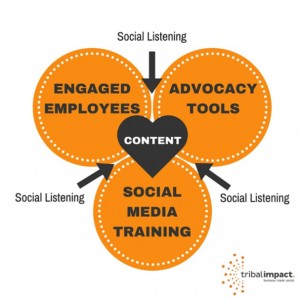— October 3, 2017

FotografieLink / Pixabay
“A person’s success in life can usually be measured by the number of uncomfortable conversations he or she is willing to have.”
Tim Ferriss, “The 4 Hour Workweek”
We all want to work in a reasonably happy, productive environment. We want to like and trust our colleagues, and keep the office politics to a minimum.
That may be what we want, but it’s not always what we get.
Dealing with an underperforming employee is probably one of the worst parts of being a manager. Nobody likes it. The only thing worse, really, is actually firing someone.
And yet, if we put off dealing with an employee who isn’t working out, we may find ourselves sitting down to discuss a termination – after spending months putting up with poor performance.
I can’t tell you that you can save every problem employee. Some will need to be fired. But before you ever get to that, try some of the suggestions below.
- Talk To Them
Many employees who are underperforming are already well aware that they’re in trouble. They’re stressed and worried about it. They brood over the situation, but don’t know how to change it – or they would have changed it already.
Your job is threefold:
- To be clear about what is expected of them.
- Be specific, down to the hour something is due, or how many digital widgets they are expected to finish.
- Hold them accountable for meeting those goals.
If you only get upset when they miss the mark sometimes, but not others, your employee may end up blaming you more for being inconsistent than they blame themselves for not doing their jobs.
If you ask the right questions and listen well, you may find out why this employee is having trouble. Is their computer glacially slow? Is another department giving them additional work? Has their work changed somehow (new software, new rules) so that they legitimately can’t work as well or as fast as before?
Also check in on their personal life. Divorces, aging parents, problems with children – these all take a profound toll on people. It would be a shame to fire someone simply because they were going through a temporary rough patch. (Of course, rough patches need to end at some point.)
- Don’t trash talk them to other employees – or anyone else.
This is one of the thorniest issues with difficult employees or employees who just can’t seem to do their jobs.
How do you handle their co-workers, and their co-workers’ expectations, demands, and behavior?
Few people in an office work completely independently. Your struggling employee is probably causing grief for their co-workers, too. Some of those co-workers may not be entirely gracious about it. And that can hurt the employee’s performance even more.
So be careful how you react when other employees complain about their lagging teammate. Try to get the specifics of what’s really going on.
It’s possible you don’t have a problem employee, but a debilitating personality conflict. Or that someone is being scapegoated for the dysfunction of the team.
- Define what is acceptable and not acceptable with the employee.
What concrete things would you need to see from this employee for them to stay?
Figure this out – and document it – before you have your chat. But also develop a plan with the employee when you have your talk.
It’s important to include the employee while making a “performance improvement plan”. They need to feel heard and have input on how things are going to change. The more they agree with the signposts you’re setting, the more likely they are to actually meet them.
Here are a few examples:
- Being late to work. The employee must be at their desk by 9 am. This will be enforced with a “three strikes, you’re out” policy. If they are late without a good and verifiable reason, or without permission, more than three times in the next 90 days, they will be terminated.
- Yelling at team members. Any incidence of yelling or an emotional outburst will result in the employee being sent home. If this happens more than three times in the next 90 days, the employee will be terminated.
- Coming to work drunk or high. Employees who show up to work intoxicated will be sent home. If this happens more than three times in the next 90 days, the employee will be terminated.
If you are particularly fed up with someone’s behavior, omit the three strikes rule. It may not make sense to disrupt your entire office three more times if the employee has already been given ample warning.
Hopefully the behaviors you want to change are not this extreme. Perhaps your problem employee is far less disruptive. And perhaps you don’t want to go all the way to firing them.
So reduce the consequences. No pay raise, no bonus. Maybe even moving them from a private office to a cubicle.
Just be careful about public punishments. They can make a problem employee perform even worse. Public punishments can also be awkward for your other workers. Most employees will be uncomfortable to see their peers punished. Your best workers may not want to spend eight hours a day in an environment like that.
- Follow up.
Don’t have just one talk and then back off. You’ll need to stick close to this employee’s performance for a while. Have weekly reviews.
Also document their progress. Hopefully, you’ll see how it improves over time.
Sadly, if there is no improvement, that documentation will still come in handy. Being able to review your records of their poor performance – and your efforts to change that – has a benefit.
It helps to make the final decision to fire the employee. And to do it with confidence.
Conclusion
We always want to hire the best people – team players who excel at their jobs from the start. But sometimes, we pick someone who’s not quite there.
They need a little help.
I don’t think small business owners should avoid firing under-performing employees. But it does make sense to invest some time in a struggling worker before you cut them loose. Especially if you consider how much work it will take to find a replacement. After all, hiring new employees is the #1 challenge for small businesses.
What do you think?
Have you ever hired an employee who struggled at first? Where you able to turn them around? Tell us how you did it in the comments.
Business & Finance Articles on Business 2 Community
(79)









